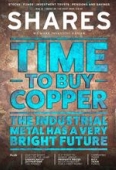Archived article
Please note that tax, investment, pension and ISA rules can change and the information and any views contained in this article may now be inaccurate.
Does earnings guidance help investors?

Every quarter, investors and analysts wait with bated breath to hear what companies expect in terms of sales and profits for the next six to 12 months. Often it is this guidance which drives a stock way higher or way lower during earnings season, not necessarily beating or missing estimates.
The ritual of giving quarterly guidance has come in for sustained criticism from public figures like investing legend Warren Buffett, Jamie Dimon, chief executive of JPMorgan Chase, one of Wall Street’s largest banks, and Larry Fink, the founder and chief executive of the world’s largest asset management firm, BlackRock.
Also, work by consulting firm McKinsey has shown that giving guidance makes no difference to corporate returns. So why do companies continue to do it and why is the trend growing rather than shrinking?
The reason seems to be that companies worry that not giving the market some kind of guidance can lead to increased share price volatility when earnings are released and result in a worse share price performance overall.
TO GUIDE OR NOT TO GUIDE
Buffett, Dimon and Fink argue that the habit of giving quarterly guidance encourages an unhealthy focus on short-term profit at the expense of long-term strategy, growth and sustainability.
Worse, they claim, if management are remunerated on short-term earnings or share-price targets then they will attempt to engineer earnings to beat their quarterly guidance and lose sight of their long-term goals.
Indra Nooyi, the outgoing chief executive of Pepsi, lamented that the treadmill of quarterly reporting made her ‘pay undue attention to short-term results’.
Yet the number of companies providing quarterly updates is actually rising and last year in the US hit the highest level in a decade, according to S&P Global Market Intelligence.
PERFORMANCE DICTATES RETURNS NOT GUIDANCE
Companies seem to have been convinced by investors and analysts that issuing quarterly guidance means greater credibility, which results in lower share price volatility, higher liquidity and possibly a higher valuation.
Yet a study by McKinsey found no evidence that it did any of these things except spark a temporary increase trading volumes when a company which had previously kept quiet starts issuing guidance.
As part of its study McKinsey looked at whether companies which discontinued guidance saw a worse return than the market. They found that on balance there was no evidence of a stock under-performing because the company gave up guidance.
Where stocks did lag the market it was due to poor underlying performance in the business, for example a decline in return on invested capital, and not giving up guidance. Poor performance led to lowered expectations for future returns, which sent the shares down.
THE COSTS OF A SHORT-TERM APPROACH
The difficult job of predicting earnings and the painful result of missing expectations can be a powerful incentive for management to focus on the short term and in some cases to manage earnings from quarter to quarter to give the impression of stability.
Companies may hold back on technology spending, hiring, or research and development (R&D) to meet quarterly earnings forecasts which can be affected by factors outside the company’s control, such as commodity-price fluctuations, stock-market volatility and even the weather.
At its most extreme it can encourage fraud. Fund manager Bernie Madoff – who ran the largest Ponzi scheme in history – gave his clients monthly updates, so the frequency or quantity of reporting is irrelevant if the quality is questionable.
UK GOING THE WAY OF THE US
Most UK companies release half-year and full-year updates, but a growing number release detailed quarterly results.
Then there are trading statements: as well as a statement on current trading to accompany the annual general meeting, many companies release ‘pre-close’ trading statements at the half-year and full year.
In the box we have picked three examples of companies which play the game well and as well as delivering guidance give a detailed explanation of how their businesses work and what investors should expect going forward.
A BETTER WAY OF COMMUNICATING WITH INVESTORS
If giving quarterly guidance is irrelevant when it comes to managing a company’s long-term growth then there needs to be a better way of helping the market to understand the businesses, its strategy and what drives its underlying value.
For example retailers could break down the elements driving their revenue growth such as same-store growth, prices, volumes and product mix. Industrial companies could explain what drives their margins and how capital-intensive their businesses are.
Rather than giving explicit financial targets, which make life easy for analysts and investors, companies could discuss how various drivers have affected their current performance and how they expect them to change going forward.
Analysts and investors would then have to build their own models to factor in the influence of various inputs not just on earnings but also on value, rather than clustering around the forced guidance of a management team too scared to give up their quarterly habit.
Compass Group (CPG) is the archetypal ‘defensive growth’ stock and is priced accordingly at 25 times earnings. However its communication with the market is exemplary and its focus on organic revenue growth and operating margins is crystal-clear.
Next (NXT) is less defensive but is just as clear with investors as what to which metrics drive the business and what to expect. Its May trading statement explained why sales were better than forecast and why investors shouldn’t get carried away with the performance.
Speedy Hire (SDY) was historically a highly cyclical business but chief executive Russell Down has done a fine job of reducing the cyclicality and communicating clearly with investors. The performance measure Down puts above all others is return on capital employed (ROCE).
Important information:
These articles are provided by Shares magazine which is published by AJ Bell Media, a part of AJ Bell. Shares is not written by AJ Bell.
Shares is provided for your general information and use and is not a personal recommendation to invest. It is not intended to be relied upon by you in making or not making any investment decisions. The investments referred to in these articles will not be suitable for all investors. If in doubt please seek appropriate independent financial advice.
Investors acting on the information in these articles do so at their own risk and AJ Bell Media and its staff do not accept liability for losses suffered by investors as a result of their investment decisions.

 magazine
magazine








